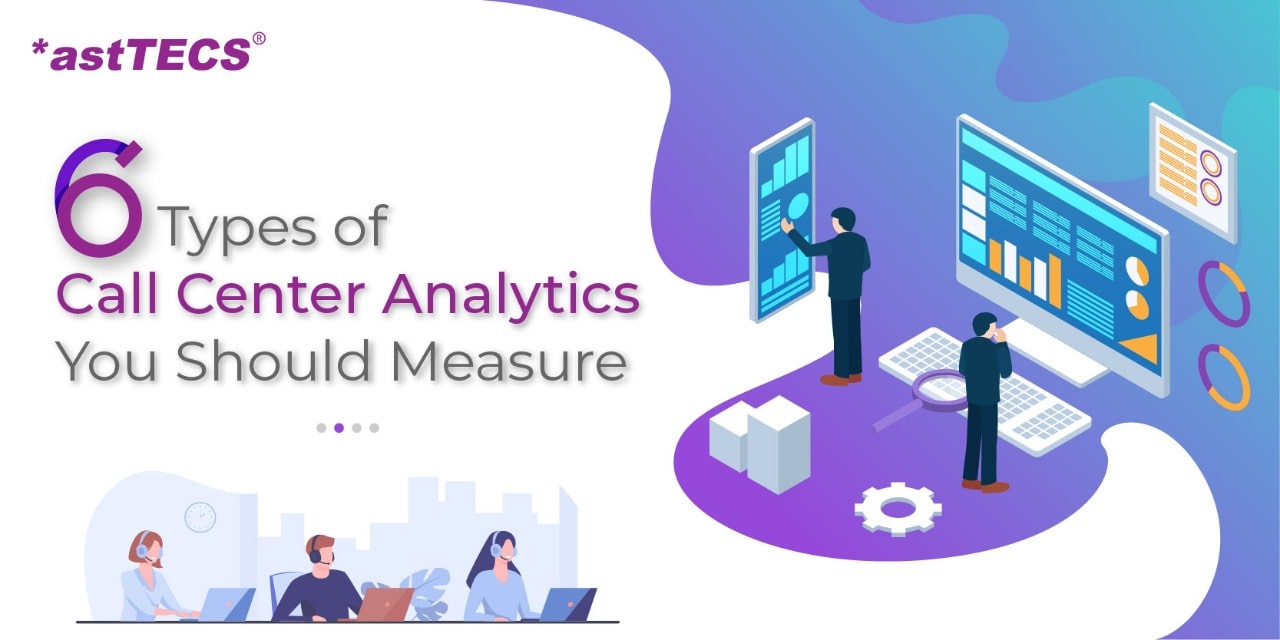6 Types of Call Center Analytics You Should Measure
What is Call Center Analytics?
Call Center Analytics is the measurement of call metrics such as call timing, call effectiveness, speech analytics, employee performance, and customer satisfaction. Today customer service teams can use advanced analytics tools to measure call center data analytics so that businesses can make better decisions for improving customer experience.
Call Center Analytics also gives the data-driven approach to the companies and call centers to conduct effective outbound campaigns, improve agent performance, and provide the best in class customer support.
Let’s dive into different call center Analytics:
Speech Analytics:
Speech Analytics is a tool used to recognize customer interaction with call center agents. Speech Analytics software is also able to understand the emotional triggers, amount of silence in the conversation, which can help brands to understand the tone of the conversation.
Companies can easily analyze the large volume of calls using speech analytics by setting trigger keywords or key searches.
Text Analytics:
Text analytics is the process of analysis of text or written documents. This technology can easily translate unstructured text into insightful data, trends, and patterns. Text analytics doesn’t only analyze documents but is also capable of analyzing social media comments, posts, etc.
Text analytics works very effectively on platforms like Facebook, Instagram, Twitter, and LinkedIn to analyze the brand mentions and other conversations regarding the platform’s brand. It can also recognize the mood of the conversation, whether consumers are talking positive or negative.
Predictive Analytics:
Predictive analytics is one of the most used and advanced tools used in the call center environment. It allows agents to view the customer’s information and call history before calling them.
Predictive analytics is widely used in call centers as it not only shows the customer’s data but also analyzes the performance metrics such as call volume, call timings, customer satisfaction level and handle time, etc. These call metrics can help companies optimize both inbound and outbound campaigns for sales, surveys, and feedback collections.
Desktop Analytics:
Questions like what agents are doing on their desktop? What application do they use during work hours? What procedures do callers use after the call? They are very common among managers and business owners, and they can easily get answers to their questions using desktop analytics tools.
Using desktop analytics, managers and call center owners can analyze the agent’s performance, working procedures, and activities. Scanning agent’s activities managers can guide them and help them to improve their performance.
Self-Service Interaction:
Self-service interaction has been on-demand as customers today prefer to solve their problems themselves without interacting with customer service executives. Self-service bots are automated chatbots with pre-feed common questions and answers. These bots can answer common consumer queries without the help of any live agent.
Self-service interactions can be done using chatbots and IVRs. There are multi-use cases of this technology, such as customer service, automated feedback, and surveys. AL enabled chatbots are capable of learning from user interactions.
Cross Channel Analytics:
The face of customer service has changed from a multi-channel experience to an omnichannel customer experience. The omnichannel customer provides customer service on all platforms. It can be using chatbots, calls, social media interactions, or other platforms like WhatsApp.
Cross channel analytics tools can analyze the conversation going on all the platforms, and it helps agents be well equipped while having interaction with the customer. It is going to be the next big thing in customer interaction technology.
What You Can Do With Call Center Analytics:

Recognizing Customer Profile:
The Speech Analytics feature allows us to recognize customers’ demographics, such as age, gender, voice, and accent.
It will also recognize the agent’s speaking skills based on his voice speed, accent, and language. Suppose the agent is diverting from the script to convince the customer to use the emotional pitches or use negative language. In that case, it can be easily recognized and used for the agent’s training or performance review.
This application is widely used by recruitment agencies to shortlist the candidates based on communication skills and accent. It is also used by call centers and companies to analyze the candidate’s performance after training.
Verifying Customers Details:
Sir, “Can you please confirm your registered mobile number and email id.” It is the first question executives ask whenever we call on customer support.
It can be easily done using the analytics solution.
Verification and customer greeting process can be easily automated using analytics software, which reduces the agent’s effort and saves time. This feature can also be used to educate customers about products and services.
Analyze Customers Sentiment:
Sentiment analysis can monitor conversations, evaluate languages, and change in voice, recognizing the customer’s mood and responding to the call.
It works based on an algorithm that gives scoring to words and voice deviations, reflecting the person’s changed feeling or tone.
The following are the sentiments analyzed by call center analytics software:
- Speaking speed of the individual
- The stress level of customers
- Frustration or stress level in the customer’s voice
Quick Recap: Sentiment analysis can easily monitor opinions and emotions on the customer’s call. Analyzing the sentiments can be automated based on human interaction using algorithms.
Outliers Detection:
You need to block the agent’s time, batch their tasks, and track their productivity.
But, the question is: How?
Answer: Outliers Detection, Yes, It can help you track your agent’s productivity and even review their performance. It is also used to monitor the script’s performance given to agents.
It can monitor the agent’s behavior on call; if the agent is rude to the caller, it will be notified to the concerned person. Agents are tied to their desks all day, and in front of the computer screen accessing the data, outliers detection can detect if an agent is trying to access unauthorized data.
Agents mostly slog their hours to achieve the targets. To do so, they sometimes go off track means not following the guidelines and regulatory compliances, which may affect brand image, so call centers use this technology to avoid such situations.
Overall, outliers detection is the one-stop solution to track the agent’s activities and review their performance.
Gap Analysis – The Way to Streamline the Call Center Process:
Gap analysis is the process of analyzing the gap in the agent’s knowledge by closely monitoring the calls and conversations he is having with customers.
How Gap Analysis will help you:
- Analyzing the agent’s knowledge about product/service
- Knowing if the agent can deliver the exact scripted conversation on the call or not
- If the agent is able to impart the knowledge gained in training on the call
- The agent is following the company process and regulations or not
Gap analysis turns out to be an important feature of call center analytics as it helps managers monitor the agent’s calls and conversations. Analyzing the calls helps managers train the agents to adhere to company policies and deliver up to expectations.
Importance of Call Center Analytics:
Quite simply: Only the analytics tools and metrics are not enough, but you need to analyze the data. The data that call center analytics provides alone doesn’t qualify for managers who want to understand these metrics and agents work.
Let’s face it: Call center analytics helps organizations to measure the success of your call centers. You can analyze the performance in real-time and find the loopholes where immediate actions are required. Viewing the historical data helps your agents to transcript their conversation with the customer in advance.
With the right analytics and data call center, problems can be easily identified, and appropriate action can resolve them. Customized reports, tracking, and metrics can help your business to improve customer satisfaction.
Call Center analytics includes data not only from customers’ calls but also from your sources like a conversation, agents’ desktop, and chatbots.
Final Words:
Call center analytics software will help the business wonders to make intelligent decisions about their agent’s performance and different campaigns. Armed with such advanced technologies, businesses can easily sort out the customer service department’s issues to smoothen the customer experience.
Now, we have thrown a lot of information at you, and we are confident that you can apply it to your call centers. If you still want help setting up call center analytics and analyzing the data professionally, we are just a call away.
Let us know your thoughts in the comments below and discuss.






Leave A Comment